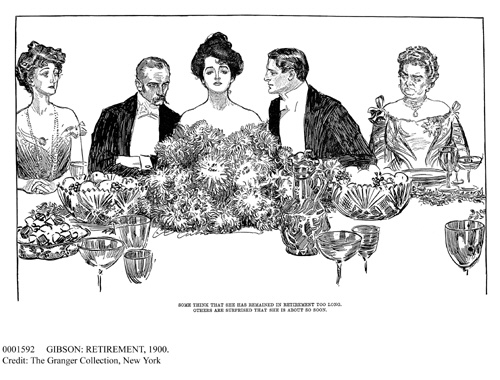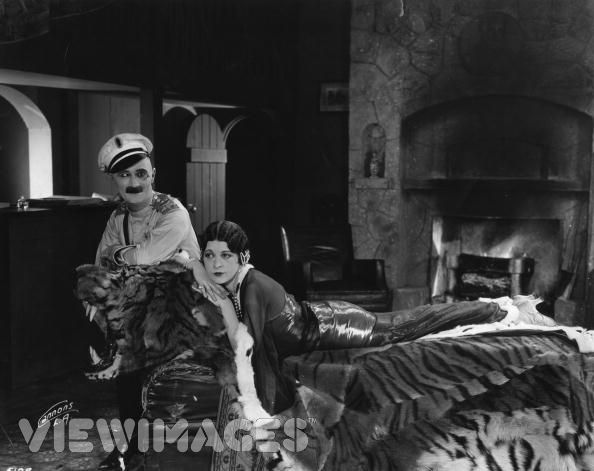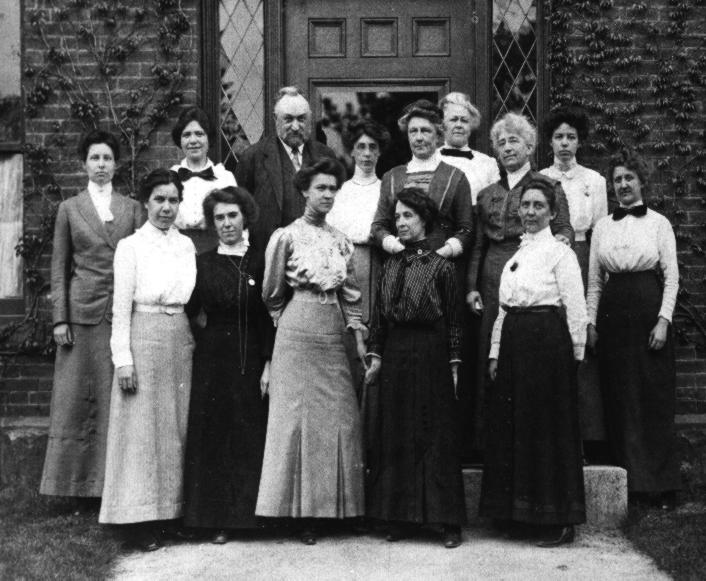
Charles Dana Gibson (1867-1944). American illustrator. ‘Some Think She Has Remained In Retirement Too Long. Others Are Surprised That She Is About So Soon.’ Pen and ink drawing, 1900.
Apparently, in the 1880s, there arose all manners of flirtatious signals between men and women. This was no doubt due to the increasing informality between the sexes as they rode bicycles sans chaperones, danced all night beneath gas lamps, and sometimes were employed in the same company. The following modes of flirtation were found in various periodicals of the day as a warning for parents with young men and women romancing each other under their unsuspecting noses.
“Flirting Is undoubtedly an art, and yet there seems to be no hard and fast rule to govern it. As a game the only rule it has is that each shall cheat the other as much as possible. It is a gamble and yet one in which the probabilities are that both players will lose. While extremely social in its nature, it does not seem to follow the laws that control society. There is organized labor, but no organized flirting, except at sea side resorts.” — Life
Hat flirtation
The young man who pulls his hat low on the forehead informs his beloved that he loves her madly. When he tips it over his eyes she must not recognise him. When he pushes it to the back of his head he bids her adieu. Taking the hat off and brushing it the wrong way expresses his despair, carrying a stone in it tells of the fair one’s cruelty, and putting it on the ground implies farewell for ever. If the young lady uses her hat as a fan, she bids her lover come and see her guardian, while throwing it across the street signifies she is engaged.
Umbrella flirtation
When a gentleman carries his umbrella grasped by the middle with the handle pointing backward he is making a declaration of love to all women whom he encounters. He may be utterly unconscious of the fact, but any one who understands the leading signals of the “umbrella flirtation” will know what is meant when a gentleman deliberately holds his umbrella in that position. Furthermore, if he carried his umbrella handle forward and inclined at forty-five degrees it would mean “We must part.”
Postage Stamp flirtation
Some ingenious persons have given a meaning to the location of a postage-stamp on a letter. For example, they say that when a stamp is inverted on the right hand upper corner it means the person written to is to write no more. If the stamp be placed on the left hand upper corner and inverted, then the writer declares his affection for the receiver of the letter. When the stamp is in the centre at the top, it signifies an affirmative answer to a question, or the question, as the case may be; and when it is at the bottom, or opposite this, it is a negative. Should the stamp be on the right hand corner, at a right angle, it asks the question if the receiver of the letter loves the sender; while in the left hand corner moans that the writer hates the other. There is a shade of difference between desiring one’s acquaintance and friendship—for example: The stamp at the upper corner on the right expresses the former, and on the lower left hand corner means the latter. The learned in this language request their correspondents to accept their love by placing the stamp on a line with the surname, and the response is made, if the party addressed be engaged, by placing the stamp in the same place but reversing it. The writer may wish to say farewell to his sweetheart, or vice versa, and does so by placing the stamp straight up and down in the left hand corner.
Other flirtations
When a lady passes a handkerchief across her face this is a signal to the gentleman friend, standing in front of the cigar store, that she must speak with him soon.
If a young man is too bashful or too diplomatic to make a frank declaration of love all he has to do is to “crumple the dance programme in his left hand,” and the young woman who has studied the yellow volume will know that he means “I can not live without you.”




